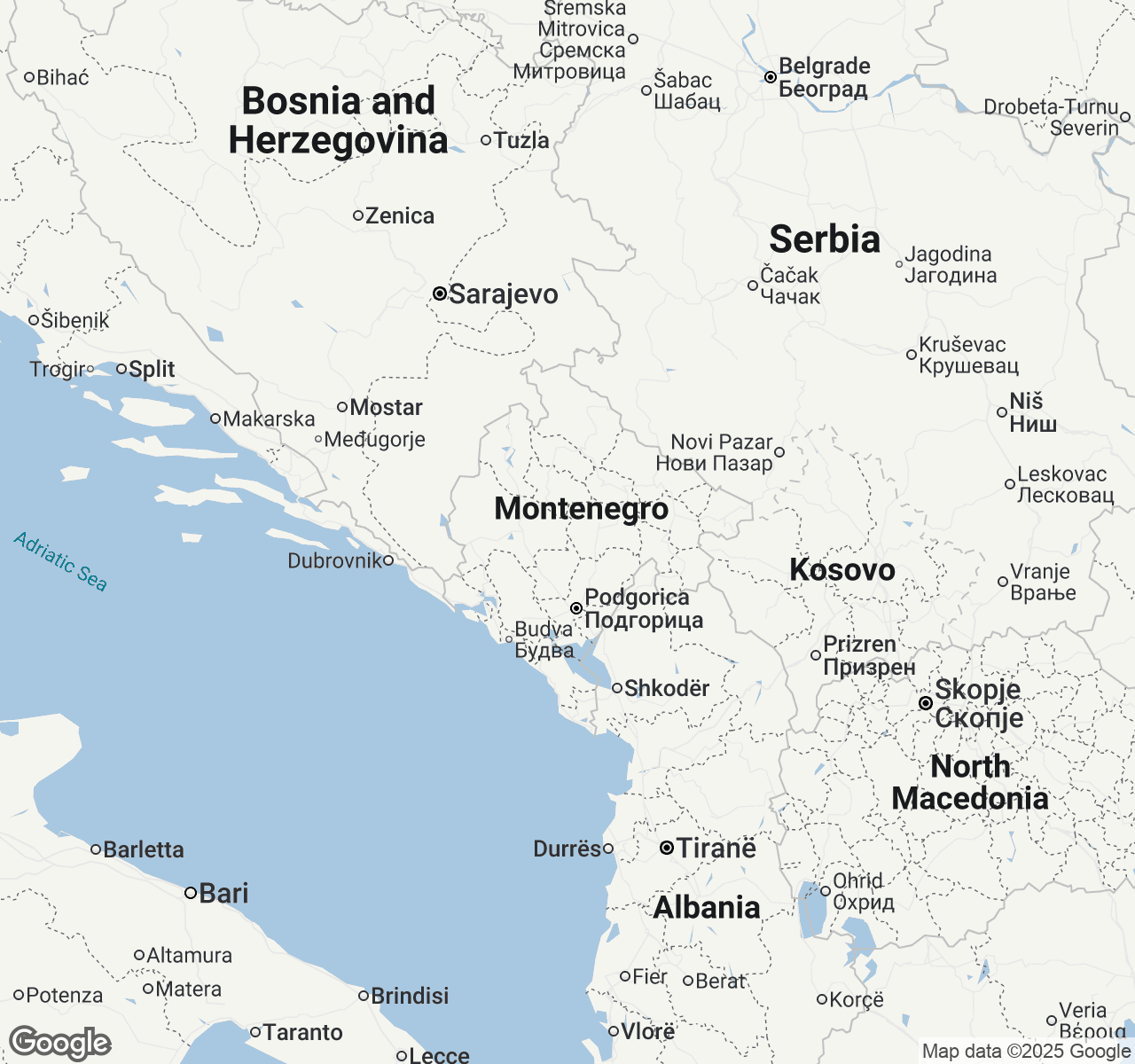
Things to Do in Montenegro
Discover the best of Montenegro
Plan Your Trip
Essential guides for timing and budgeting
Top Things to Do in Montenegro
Discover the best activities and experiences. Book now with our trusted partners and enjoy hassle-free adventures.
Explore Destinations in Montenegro
Bar
City
Biogradska Gora National Park
City
Budva
City
Cetinje
City
Durmitor National Park
City
Herceg Novi
City
Kotor
City
Lovćen National Park
City
Perast
City
Podgorica
City
Skadar Lake
City
Skadar Lake National Park
City
Sveti Stefan
City
Tivat
City
Ulcinj
City
Žabljak
City
Your Guide to Montenegro
About Montenegro
Montenegro unfolds like a whispered secret between the Adriatic's sapphire embrace and the wild Dinaric Alps. This jewel of the Balkans weaves together medieval stone villages perched on dramatic clifftops, pristine beaches where turquoise waters lap against pebbled shores, and emerald forests that seem untouched by time. Here, ancient monasteries cling to mountainsides while cosmopolitan marinas host superyachts beneath star-scattered skies. The soul of Montenegro pulses through its contrasts—the timeless serenity of Kotor's labyrinthine streets, the untamed beauty of Durmitor's glacial lakes, and the sophisticated charm of Budva's nightlife. Every corner reveals a new facet of this compact nation's extraordinary diversity, where Ottoman minarets stand alongside Venetian palaces, and where a single day can encompass alpine adventures, cultural immersion, and seaside bliss. Montenegro doesn't just offer destinations; it offers transformation.
Travel Tips
Transportation: Rent a car for maximum flexibility—Montenegro's compact size makes driving ideal. Book through international companies for better insurance coverage. Mountain roads are narrow and winding; allow extra travel time and avoid driving at night in rural areas.
Money: Montenegro uses the Euro despite not being in the EU. ATMs are widely available in cities but scarce in remote areas. Carry cash for small restaurants, markets, and mountain villages where cards aren't accepted.
Cultural Respect: Dress modestly when visiting Orthodox monasteries—cover shoulders and knees. Remove hats and maintain quiet voices inside religious sites. Montenegrins appreciate learning basic greetings; 'Zdravo' (hello) and 'Hvala' (thank you) go far in building rapport.
Food Safety: Tap water is safe to drink throughout Montenegro. Try local specialties like ćevapi and njeguški pršut at family-run konobas (taverns). Seafood is freshest at coastal restaurants; inland, opt for grilled meats and mountain cheeses.
When to Visit
Montenegro's appeal varies dramatically by season, each offering distinct advantages. Summer (June-August) brings peak warmth with coastal temperatures reaching 28-32°C and minimal rainfall (20-30mm monthly), but expect crowds and prices 40-60% higher than off-season. The Adriatic is perfect for swimming, and festivals like the Sea Dance Festival (late August) electrify the coast. Spring (April-May) and autumn (September-October) offer the sweet spot—pleasant temperatures (18-25°C), moderate rainfall (60-80mm), and prices 20-30% below peak. These shoulder seasons are ideal for hiking Durmitor or exploring Kotor without overwhelming crowds. Winter (December-March) transforms Montenegro into a budget-friendly wonderland with prices 50% lower than summer. While coastal temperatures drop to 8-15°C with increased rainfall (100-150mm), northern mountains receive abundant snow, making Kolašin perfect for skiing. The Mimosa Festival in Herceg Novi (February) celebrates the coastal winter bloom. Adventure travelers should visit May-June or September-October for optimal hiking conditions. Beach lovers will find July-August warmest but most expensive. Culture enthusiasts benefit from winter's intimate atmosphere and significant savings, though some coastal restaurants close seasonally.

Montenegro location map